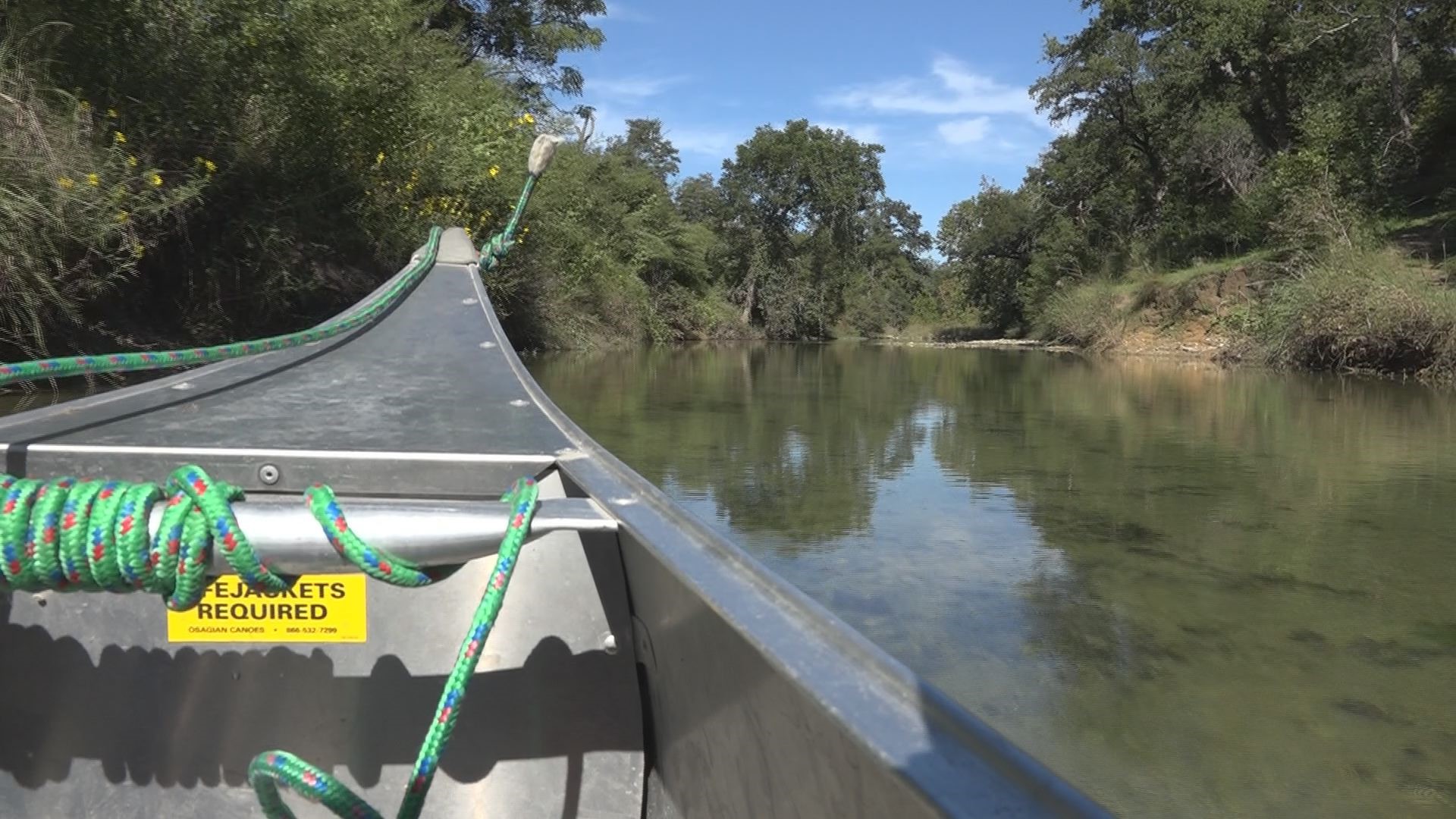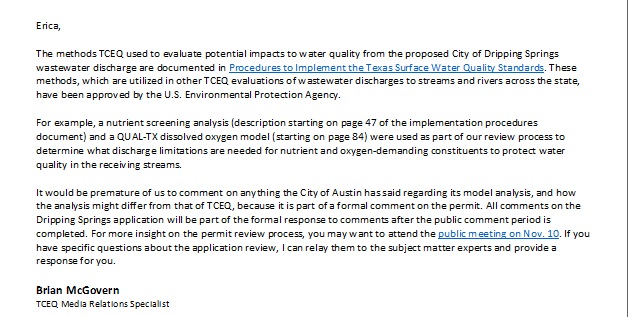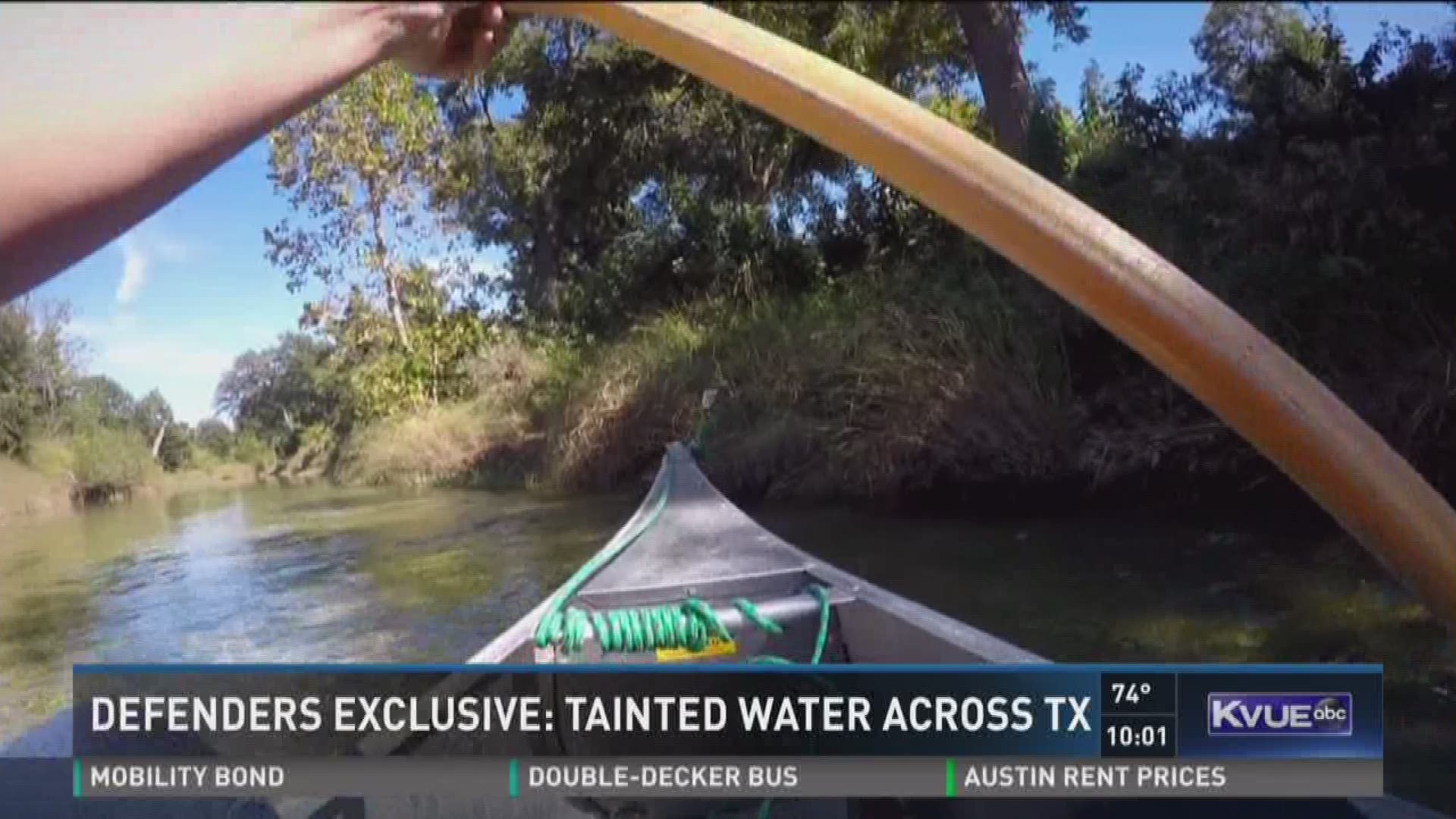The dirty truth about Texas water
Water is everywhere around us. Central Texas lakes, creeks, and waterholes are natural treasures enjoyed by thousands of people. But a KVUE Defenders investigation found much of that water may not be as clean as you think.

UPDATE:
AUSTIN - In November 2017. the Texas Commission on Environmental Quality responded to 160 comments filed this year.
In response, TCEQ changed the draft permit, adding tighter environmental requirements.
However, this does not authorize construction or operation of any proposed facilities.
It’s part of the state’s permitting process.
The environmental group “Protect Our Water” released this statement:
POW will continue to oppose this permit at TCEQ and encourage Dripping Springs to adopt a 100% beneficial re-use solution. Dripping Springs’ proposed 995,000 gallon per day wastewater discharge will still endanger Onion Creek, the Trinity Aquifer (drinking water) and endangered species habitat. Although we are disappointed TCEQ is moving forward with the permit, the over 1,000 public comments and intervention by the EPA did result in two improvements: 1) Total Nitrogen will be limited to 6 mg/L in the effluent and 2) dechlorination of the effluent will be required.
PREVIOUS STORY:
Thousands of violations reveal a Texas-wide problem: Our water supply likely has traces of unclean wastewater.
Our KVUE defenders started looking at the issue after Dripping Spring, TX asked for a wastewater permit. They want authority from the Texas Commission on Environmental Quality (TCEQ) to discharge effluent into Onion Creek.
“Enjoy the smell now because it won’t smell like this pretty soon,” said Richard Beggs, Dripping Springs resident who owns property on Onion Creek.
He and Wesley Pitts showed the Defenders where the city plans to discharge.
“You can see all of the fish beds, too,” said Pitts.
They fear the water will kill the life not only here, but also across central Texas.
“This entire stretch of creek downstream of the discharge is a losing segment. So it recharges the aquifer,” said Beggs.
We canoed down the creek to understand how the waterway works.
Dripping Springs’s request is for allowance of 995,000 gallons of effluent a day.
The city says the estimate was based off projections of city growth.
“This council does not want this water to go into the creek.,” said Todd Purcell, Mayor of Dripping Springs.
The city, he says, requested a state discharge permit, but doesn’t intend to use it. They want to use the water for parks and sell the rest of the effluent to business and residential developments. They have contracts in place.
“The versatility of being able to discharge into the creek is what gives us the capability of truly reusing this water,” said Purcell.
The state’s environmental regulatory agency, Texas Commission on Environmental Quality, requires a storage plan or discharge permit as back-up.
Beggs and Pitts want retention ponds as backup, not discharge permits into the creek. The city said local groups would have to pay for those ponds..
“We’re not scrimping dollars on the plant,” said Purcell.
Purcell warns no permit would open up other wastewater companies to move in.
We looked at wastewater entities around Texas. A public information request reveal more than 1,100 violations reported to TCEQ.
Tceq Waste Water Violations by kvuenews on Scribd
TCEQ violations are self-reported.
“We are confident by what we’re doing and how we’re treating the stuff we’re putting place that we won’t have the mishaps,” said Purcell.
More than 800 people have filed protests against the permit.
The City of Austin Watershed Protection performed its own study. Using an analysis called WASP (Water Quality Analysis Simulation Program), researchers said TCEQ doesn’t account for every impact. Austin’s study says the effluent would cause algae to grow in Barton Springs creek.
Austin Study April 2016 by kvuenews on Scribd
Austin has spent $66 million into protecting Onion Creek and the Edwards Aquifer.
“The city of Austin fundamentally disagrees with how TCEQ evaluates the potential impacts,” said Chris Herrington, Water Resource Evaluation Section Manager at City of Austin Watershed Protection Department.
TCEQ told us in an email, “These methods…have been approved by the U.S. Environmental Protection Agency.

It would be premature of us to comment on anything the City of Austin has said regarding its model analysis, and how the analysis might differ from that of TCEQ.”
TCEQ denied our request for interview, but said they would talk during a public meeting. That is scheduled for Nov. 10 in Dripping Springs.
Documents from the KVUE Defenders' investigation can be read below.
- City of Austin Law Department letter on Dripping Springs permit application
- Save Our Springs letter to TCEQ on Dripping Springs permit application
- Protect Our Water letter to EPA on Dripping Springs permit application
- Preliminary findings on surface/groundwater interaction along Onion Creek
- Dripping Springs Direct Potable Reuse Feasibility Study
- Dripping Springs TPDES Permit Map
- Barton Springs Edwards Aquifer Conservation District memo
- BSEACD memo on recent studies on Blanco River and Onion Creek
- Hill Country Alliance letter to TCEQ on Dripping Springs permit application
- Study on surface water/groundwater interactions along Onion Creek
- Resolution by Barton Springs Edwards Aquifer Conservation District opposing permit application
- Save Barton Creek Association resolution opposing permit application


